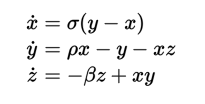Comporre formule matematiche negli e-book¶
Il Lettore di E-book di calibre è in grado di mostrare le formule matematiche contenute nei libri ( in formato EPUB e HTML). Puoi comporre le formule direttamente con TeX, MathML o AsciiMath, il lettore di e-book di calibre usa l’eccellente libreria MathJax <https://www.mathjax.org> _ per mostrarle. Questa è una breve guida sulla creazione di e-book contenenti formule matematiche compatibili con il lettore di e-book di calibre.
Un semplice file HTML con le formule matematiche¶
Puoi scrivere le espressionia dentro ad un semplice file HTML, il lettore di Calibre le convertirà nelle formule corrette. Potrai usare i normali comandi Tex ma con un piccolo accorgimento: la «e commerciale» il «maggiore di» ed il «meno di» devono essere scritte rispettivamente con: &, < e >.
Il primo passo è quello di dire a calibre che il file conterrà delle formule matematiche, inserendo il seguente frammento di codice alla sezione <head> del file HTML:
<script type="text/x-mathjax-config"></script>
Tutto qua, ora puoi digitare le formule come vuoi in un file .tex. Eco, ad esempio, l” equazione di Lorentz:
<h2>The Lorenz Equations</h2>
<p>
\begin{align}
\dot{x} & = \sigma(y-x) \\
\dot{y} & = \rho x - y - xz \\
\dot{z} & = -\beta z + xy
\end{align}
</p>
Ecco come appare il frammento in una schermata del lettore di e-book di calibre.

Equazione di Lorentz¶
Qui sotto è riportato Il file HTML completo, con più equazioni ed espressioni matematiche. Puoi convertire il file HTML in EPUB con Calibre per concludere con un e-book da distribuire agli altri.
Ecco l” EPUB generato: mathjax.epub.
<!DOCTYPE html>
<html>
<!-- Copyright (c) 2012 Design Science, Inc. -->
<head>
<title>Math Test Page</title>
<meta http-equiv="content-type" content="text/html; charset=UTF-8" />
<!-- This script tag is needed to make calibre's ebook-viewer recpgnize that this file needs math typesetting -->
<script type="text/x-mathjax-config">
// This line adds numbers to all equations automatically, unless explicitly suppressed.
MathJax.tex = {tags: 'all'};
</script>
<style>
h1 {text-align:center}
h2 {
font-weight: bold;
background-color: #DDDDDD;
padding: .2em .5em;
margin-top: 1.5em;
border-top: 3px solid #666666;
border-bottom: 2px solid #999999;
}
</style>
</head>
<body>
<h1>Sample Equations</h1>
<h2>The Lorenz Equations</h2>
<p>
\begin{align}
\dot{x} & = \sigma(y-x) \label{lorenz}\\
\dot{y} & = \rho x - y - xz \\
\dot{z} & = -\beta z + xy
\end{align}
</p>
<h2>The Cauchy-Schwarz Inequality</h2>
<p>\[
\left( \sum_{k=1}^n a_k b_k \right)^{\!\!2} \leq
\left( \sum_{k=1}^n a_k^2 \right) \left( \sum_{k=1}^n b_k^2 \right)
\]</p>
<h2>A Cross Product Formula</h2>
<p>\[
\mathbf{V}_1 \times \mathbf{V}_2 =
\begin{vmatrix}
\mathbf{i} & \mathbf{j} & \mathbf{k} \\
\frac{\partial X}{\partial u} & \frac{\partial Y}{\partial u} & 0 \\
\frac{\partial X}{\partial v} & \frac{\partial Y}{\partial v} & 0 \\
\end{vmatrix}
\]</p>
<h2>The probability of getting \(k\) heads when flipping \(n\) coins is:</h2>
<p>\[P(E) = {n \choose k} p^k (1-p)^{ n-k} \]</p>
<h2>An Identity of Ramanujan</h2>
<p>\[
\frac{1}{(\sqrt{\phi \sqrt{5}}-\phi) e^{\frac25 \pi}} =
1+\frac{e^{-2\pi}} {1+\frac{e^{-4\pi}} {1+\frac{e^{-6\pi}}
{1+\frac{e^{-8\pi}} {1+\ldots} } } }
\]</p>
<h2>A Rogers-Ramanujan Identity</h2>
<p>\[
1 + \frac{q^2}{(1-q)}+\frac{q^6}{(1-q)(1-q^2)}+\cdots =
\prod_{j=0}^{\infty}\frac{1}{(1-q^{5j+2})(1-q^{5j+3})},
\quad\quad \text{for $|q|<1$}.
\]</p>
<h2>Maxwell's Equations</h2>
<p>
\begin{align}
\nabla \times \vec{\mathbf{B}} -\, \frac1c\, \frac{\partial\vec{\mathbf{E}}}{\partial t} & = \frac{4\pi}{c}\vec{\mathbf{j}} \\
\nabla \cdot \vec{\mathbf{E}} & = 4 \pi \rho \\
\nabla \times \vec{\mathbf{E}}\, +\, \frac1c\, \frac{\partial\vec{\mathbf{B}}}{\partial t} & = \vec{\mathbf{0}} \\
\nabla \cdot \vec{\mathbf{B}} & = 0
\end{align}
</p>
<h2>Inline Mathematics</h2>
<p>While display equations look good for a page of samples, the
ability to mix math and text in a paragraph is also important. This
expression \(\sqrt{3x-1}+(1+x)^2\) is an example of an inline equation. As
you see, equations can be used this way as well, without unduly
disturbing the spacing between lines.</p>
<h2>References to equations</h2>
<p>Here is a reference to the Lorenz Equations (\ref{lorenz}). Clicking on the equation number will take you back to the equation.</p>
</body>
</html>
Nota
Il lettore e-book di calibre supporta sia MathML che Tex, ma devi includere la riga <script type="text/x-mathjax-config"></script> nel tuo file HTML o MathML non verrà mostrato.
Ulteriori informazioni¶
Dato che il lettore di e-book di calibre usa la libreria MathJax per mostrare le formule matematiche, il miglior luogo per appprofondire l’argomento delle formule matematiche negli e-book e per ottenere aiuto è il sito web di MathJax.
